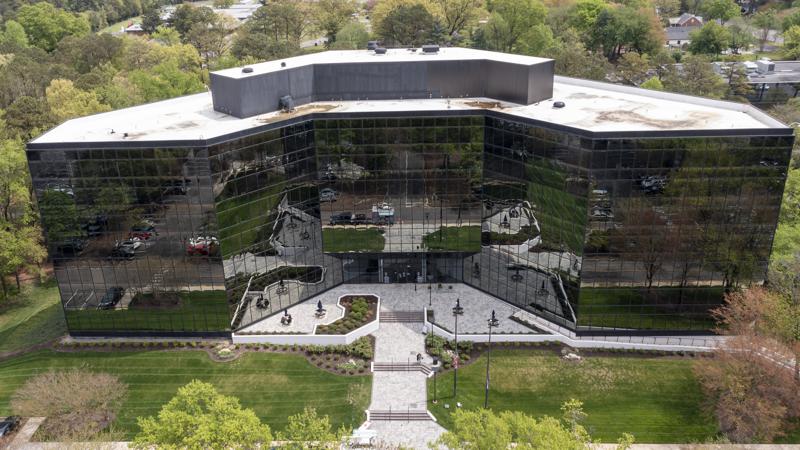
RICHMOND, Va. (AP) — A year and a half into the coronavirus pandemic, the Virginia Employment Commission is still swamped with backlogged claims, its call centers are underperforming and serious staffing problems persist, according to a scathing interim report the state’s legislative watchdog agency presented to lawmakers Monday.
The agency’s staff undertook its review after the employment commission came under harsh scrutiny from lawmakers and members of the public for its by some measures worst-in-the-nation response to the surge in jobless claims that began early last year. Thousands of Virginians have faced lengthy delays while waiting for benefits, and many have been unable to reach anyone for help or information about their case.
“While operating in the extremely challenging public health environment created by COVID was understandably difficult … meaningful actions could have been taken sooner to respond to the public’s needs,” Hal Greer, director of the Joint Legislative Audit and Review Commission, said at the start of Monday’s presentation.
Democratic Gov. Ralph Northam’s secretary of labor, Megan Healy, oversees the employment commission and defended its performance. Although she agreed that the agency was not prepared for the pandemic, she argued in remarks to lawmakers that the root of the problem was a complicated federal funding formula that’s long left the agency starved for resources.
The review commission’s work will continue, with a final report and additional recommendations for improvement expected in November. What follows is a look at the interim findings:
TIMELINESS ISSUES AND A GROWING BACKLOG
In the past, the employment commission generally issued initial payments in a timely manner, Lauren Axselle, who is leading the review, said Monday. But since the start of the pandemic, a problem has emerged.
The percentage of first payments that met the federal government’s standard has sharply fallen since the first quarter of 2020, and by this July, only 26% of first payments were issued within 21 days. Nearly half of claimants were waiting more than 70 days for payment, Axselle said.
Meanwhile, a backlog in more complicated claims requiring adjudication has accumulated.
While the VEC has completed adjudicating 92,000 claims as required by a May 2021 settlement in a class-action lawsuit, other cases are piling up. More than 100,000 claims not included in the lawsuit still required adjudication as of August, and an estimated 1 million claims issues that were previously bypassed to expedite payments may have to be revisited, Axselle said.
The VEC has not been able to hire enough staff to deal with those complex cases. According to Axselle’s presentation, 46% of full-time adjudication positions were vacant as of mid-July, and turnover in the agency was high, at 44% between January 2020 and July 2021.
First-level appeals, which were also timely before the pandemic, are now taking twice as long as the national average at 275 days, according to her presentation.
ACCURACY AND OVERPAYMENT CONCERNS
To expedite payments, the agency approved some claims before reviewing key documents to determine eligibility, Axselle said. That’s resulted in millions of dollars of overpayments, which are difficult to collect.
Last year’s rate of incorrect payments — which can result from fraud or mistakes and are almost always overpayments — was just under 45%, she said, substantially higher than the 10% standard the federal government considers acceptable, Axselle said. The agency is estimated to have issued $930 million in incorrect payments through the state-level unemployment insurance program last year, according to the presentation.
For now, all efforts to collect incorrect payments have been paused because of the backlog of pending adjudications, Axselle said.
CALL CENTER WOES
Throughout the pandemic, Virginians have faced frustration in trying to reach VEC customer service call centers. Many have turned to social media or online forums to crowdsource help.
According to Monday’s presentation, the centers have been answering only a small portion of calls, largely because of insufficient information technology systems and too few staff.
In June 2020, about 6% of calls were being answered. By June 2021, things were worse, at 4% answered, according to the presentation. The average customer wait time also grew from about a three-hour wait to a 10-hour average wait over the year. And millions of calls were blocked entirely.
Even if a caller gets through, they don’t always reach an employee able to answer their question.
LONG-RUNNING PROBLEMS
Well before the pandemic led to government shutdown measures and a surge in jobless claims, the VEC had too few staff to keep up with the workload, Axselle said.
The agency, which uses an IT system developed in 1985 that relies on a nearly obsolete programming language, is in the midst of a modernization project that began 12 years ago and should have been completed long ago.
That’s meant an overreliance on manual processes and paper documents, Axselle said. For instance, VEC staff described having to manually enter applicant data into the system even when applications were submitted online, she said.
Del. Terry Austin, a Botetourt Republican, said after the presentation that he continues to hear from constituents — “their backs are to the wall” — facing problems with the agency.
“We just have to put this on the front burner and get it fixed,” he said.